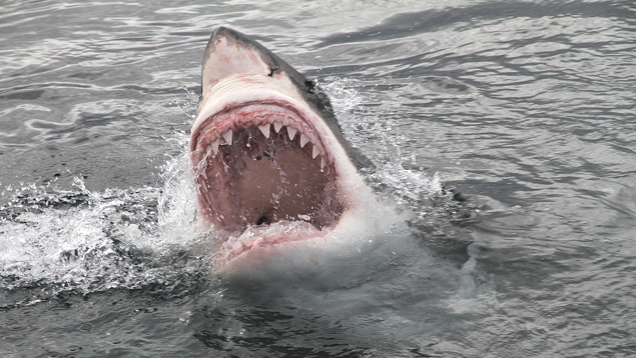The monster in music
 CREDIT: PETER_NILE / ISTOCK / THINKSTOCK
CREDIT: PETER_NILE / ISTOCK / THINKSTOCKJohn Williams' main theme for Jaws is one of the most recognizable and terrifying movie themes even four decades later.
Superstition is a powerful aspect of humanity that seems to seep into every facet of life, and music is no exception to this. Tales of haunted recording studios, possessed instruments and ghastly music venues are very commonplace, but what about music itself? Why do certain songs make our skin crawl and send chills down our spines? Usually fear is derived from stories and myths, but the vast majority of frightening music is instrumental. So where does this fear come from?
Most of the eerie sensations caused by music can be attributed to minor chords and unusual harmonies. When notes in music sound sad or sour, we tend to interpret them as ominous. This echoes back to the medieval times where musical composition was predominantly a religious pursuit. In this period certain chords and intervals were widely regarded as taboo because of the dissonance they embodied. The augmented fourth was referred to as the devil in music and thusly prohibited by various groups throughout the centuries.
Since the Middle Ages the art of scary music, especially in film scoring, has come a long way, being refined and carefully crafted to the point of near mechanism. Horror music tends to follow three distinctive styles: classical, electronic or ambient, but they all retain the same underlying format.
Spooky music generally begins with a subtle bass melody, usually in a minor key. This is most often overlaid with a high-pitched trill, played with an old out of tune piano or sometimes bells, and occasionally a punchy synthesizer for the more electronic tracks. These instruments are used for the lasting reverb from the notes that helps to build tension and unease in listeners. For songs taking a more classical route, this high trill is generally performed on harsh and abrupt violins such as the infamous shower scene in Alfred Hitchcock’s Psycho.
Despite these conventions, there’s still a bit of room for innovation in horror music, particularly when it comes to uncommon and niche instruments. Their obscure qualities stand out in stark contrast when heard against common and classical instruments. This variance contributes to the tension in music that makes us feel like something is severely out of place. Some of the more popular niche instruments are the theremin and the waterphone, which have been heard in everything from The Matrix, to The Day the Earth Stood Still.
Innovation in horror doesn’t stop at obscure instruments, however. It branches into not-so-musical musical elements referred to as non-linear. These are characterized by drastic changes in volume and a cacophony of pitches. Non-linear noises are naturally found in nature where they are used to express fear and duress in animals when confronted by predators or other dangers. These sounds are called non-linear because they reside outside the natural range of their vocal chords, where noises become unpredictable, chaotic, and lose their natural timbre. Many composers try to mimic non-linear elements on instruments to tap into our natural survival instincts and awaken a terrifying primal fear. You can find this technique in a number of Alfred Hitchcock’s films such a Psycho, and The Birds, as well as much of Krzysztof Penderecki’s work such as The Shining, and The Exorcist.
Finally, what really makes music frightening is syncing it up to video.
Music has always been a vital part of cinema, dating back to the era of silent films, where live musicians accompanied the footage to help immerse the audience. This synchronization is most effective when focusing on the startle reflex.
Although a sudden noise or face popping up on screen may startle us, when both senses are assaulted at once, the effect increases exponentially. Although it is popular opinion that horror movies on mute become somewhat of a comedy, the footage itself still helps to drive the fear. The telltale notes of Jaws become all the more ominous when paired with shots of the looming monster beneath the shadowy ocean depths.
True horror is only achieved when music and video come together hand in hand to create something sincerely traumatic.
If you’re looking to put a real chill in someone this Halloween with a homemade horror soundtrack, just remember this; start with a slow cello, add a creepy piano or mallet instrument and remember, sour is good. Next, find something wacky in your attic and add it along with a clip of your little sister whispering a nursery rhyme.
Your friends will never think twice about winding up on your bad side.














